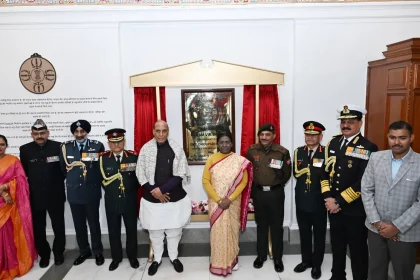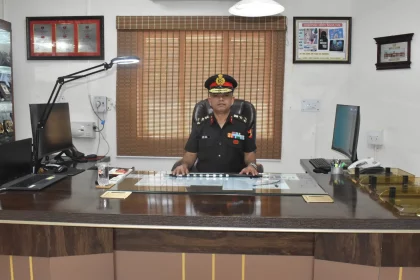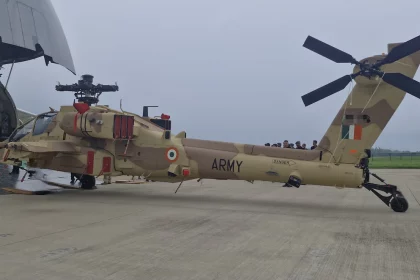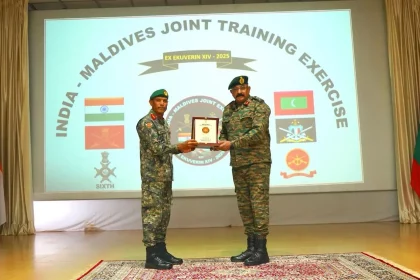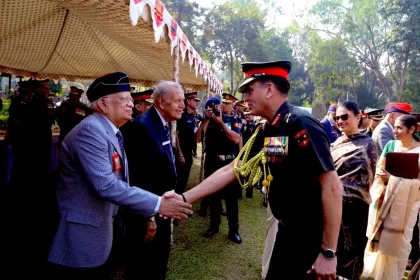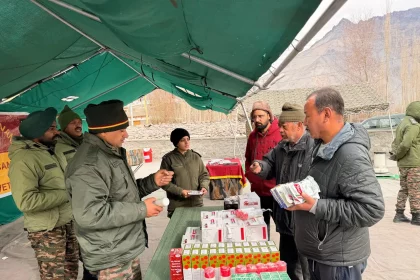President Droupadi Murmu Inaugurates Param Vir Dirgha at Rashtrapati Bhavan on Vijay Diwas
Rashtrapati Bhavan Unveils Param Vir Dirgha to Honour India’s Supreme War Heroes on Vijay Diwas.
Brigadier Ashish Johar Assumes Command of Army’s Simulator Development Division
Army Training Command Welcomes Brig Ashish Johar as Head of Simulator Development Division.
Indian Army Receives Final Batch of US-Made Apache AH-64E Attack Helicopters
India Completes Delivery of Six AH-64E Apaches, Bolstering Western Border Attack Aviation Capability.
Ex Ekuverin Culminates with Joint Validation Exercise in Thiruvananthapuram
The India–Maldives bilateral military exercise Ex Ekuverin concluded at Thiruvananthapuram with a joint validation exercise after two weeks of intensive…
Lt Gen Dhiraj Seth Commemorates Vijay Diwas 2025 in Pune
Honouring Heroes: Southern Command Pays Tribute on Vijay Diwas 2025.
Indian Army Conducts Veterinary Camp in Nubra Valley
Promoting Animal Health and Supporting Local Communities in Ladakh.

